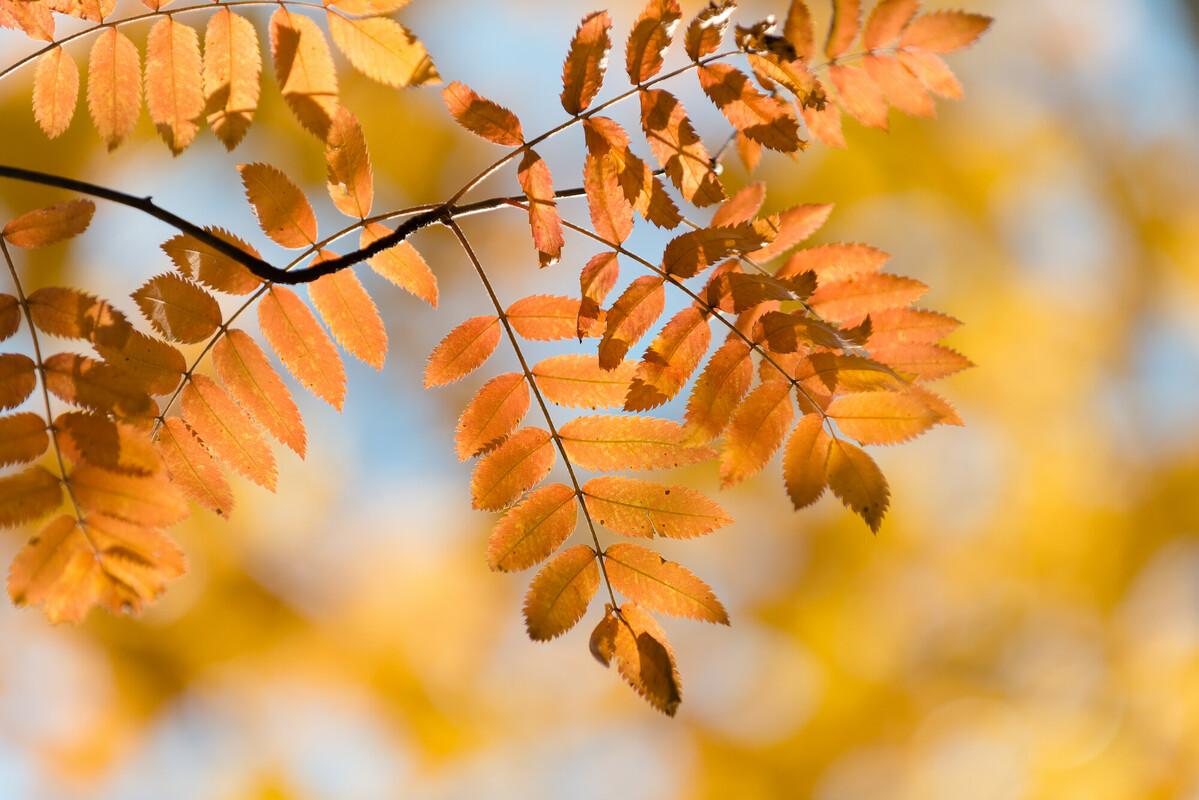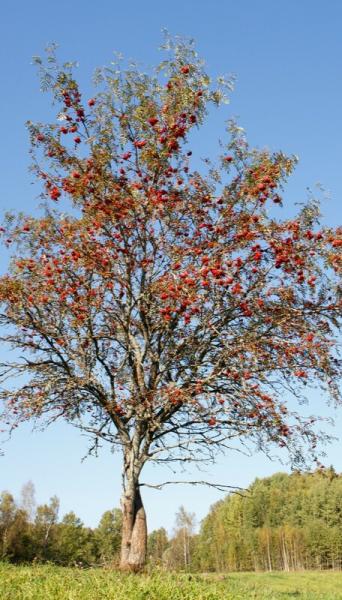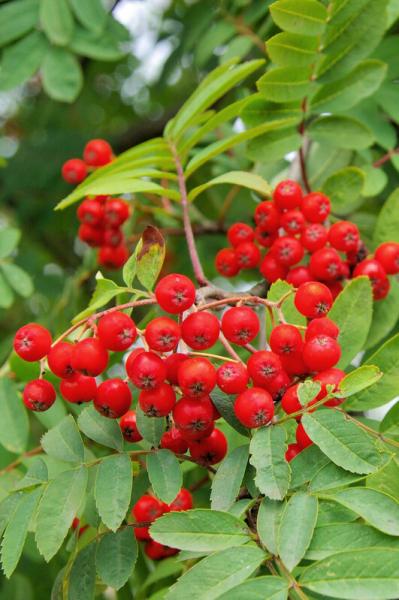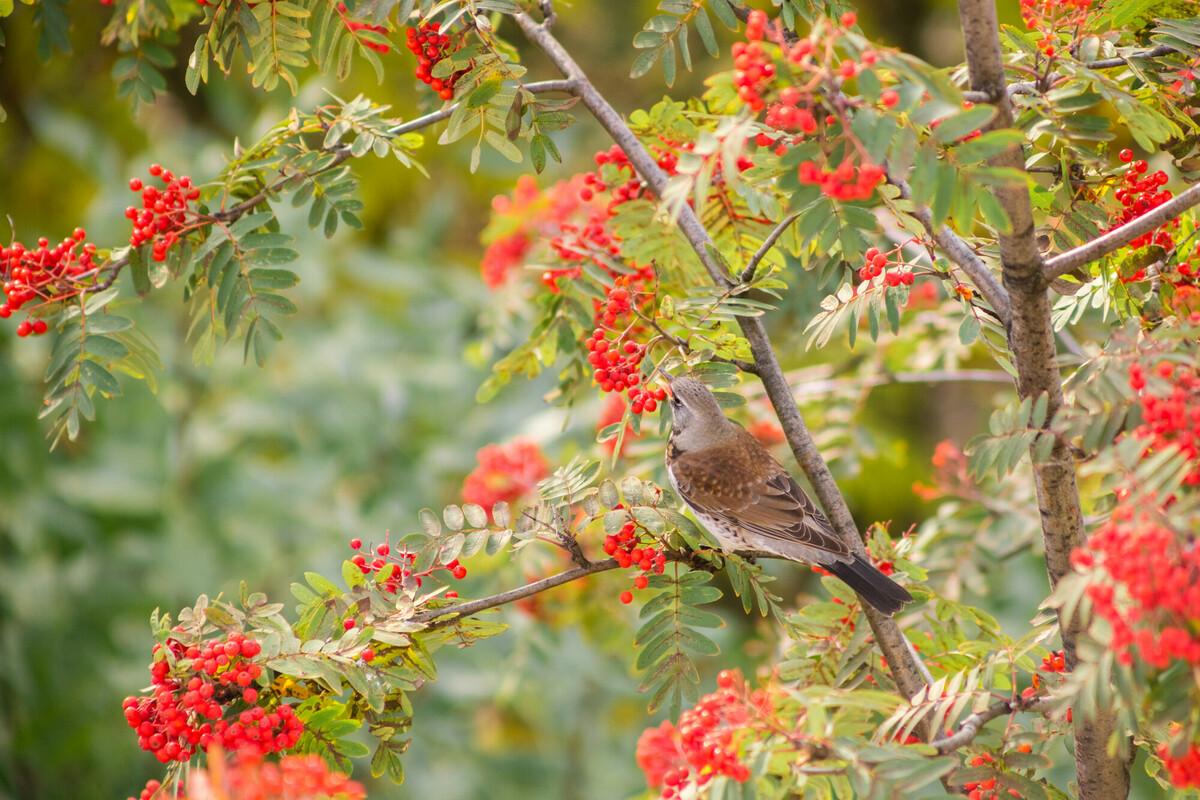
Species Name: Sorbus aucuparia
Known for its scarlet berries, the rowan tree can live for up to 200 years. Commonly found in the high-altitude areas of northern England and Scotland, the rowan is also known as the “mountain ash” as its leaves are similar to those of the ash, Fraxinus excelsior.
Mature trees can grow to 15m in height. The bark is smooth and silvery grey, and leaf buds are purple and hairy.

Leaves are made up of five to eight pairs of leaflets, plus one 'terminal' leaflet at the end. Each leaflet is a long, oval shape with a toothed edge.

After the creamy-white flowers are pollinated during spring and summer, they are transformed into masses of bright red berries. These berries are enjoyed by a range of different birds in autumn.

Widely found as a solitary tree in the wild, the rowan grows around the outside of woodland areas - they can be found in the Forest doing just that. They are also commonly planted in towns and gardens.
The rowan's old Celtic name, 'fid na ndruad', means wizards' tree. It was once believed that planting a rowan by one's house would provide protection from witches. The bright red colour of the berries was associated with witches, magic and fighting off evil spirits. Cutting down a rowan was even considered taboo in Scotland.
The wood of the rowan is hard and tough, and is sometimes used in furniture making, carving and engraving. The berries are only edible to humans once cooked. They have a sour taste and are rich in vitamin C. Rowan berries can be made into jams with a lovely red colour and tart flavour. Raw berries should not be ingested - check our Forest Foraging Article for information on safe foraging.
The leaves provide food for insect larvae such as the Welsh wave moth caterpillar and the autumn green carpet caterpillar. Flowers provide pollen for bees, butterflies and other flying pollinators. Berries are enjoyed by a range of birds in autumn including fieldfare, redstart, redwing, blackbird, mistle thrush, song thrush, and waxwing.
The Gaelic name Rowan likely has a connection to the rowan tree's red berries. The name Rowan means "little redhead".
3% of the trees we are planting in the Forest this season are rowan trees.




